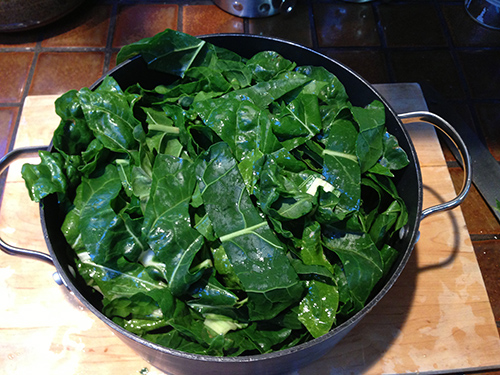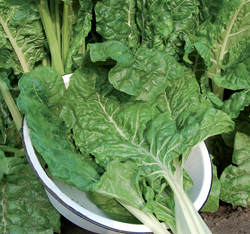This past year I grew several varieties of chard—Ruby, Bright Lights and Argentata (shown above).
For looks in the garden I would pick Ruby chard and Bright Lights (whose stalks come in lovely shades of red, pink, salmon and yellow) and grow them around my flowers inside my vegetable garden because they are soo beautiful (Ruby chard-above last year).
But to eat and for flavor I would pick Argentata chard hands down. This heirloom chard, also known as Bionda da Costa, is revered by Italian cooks and for good reason. Argentata produces large, deep green leaves with juicy white stalks. The stalks are never stringy or tough like some other chards but soft and tender when steamed. I eat both the leaves and stems. Chard reminds me of steamed spinach only better.

Here is the steamed Argentata chard with a little balsamic salad dressing on it with my french fingerling potatoes I grew and salmon (which I did not grow!)
And a bonus of Argentata is that it is one of the most cold hardy varieties. It won’t make it through the whole winter here in Santa Fe but will survive longer in the fall than the others with our cold winters. I got my seeds from John Scheppers Kitchen Garden Seeds.
🙂 We can plant chard seeds inside right now in March and early April and transplant them to the garden in late-April or plants seeds then too but not now as it is still too cold at night.






